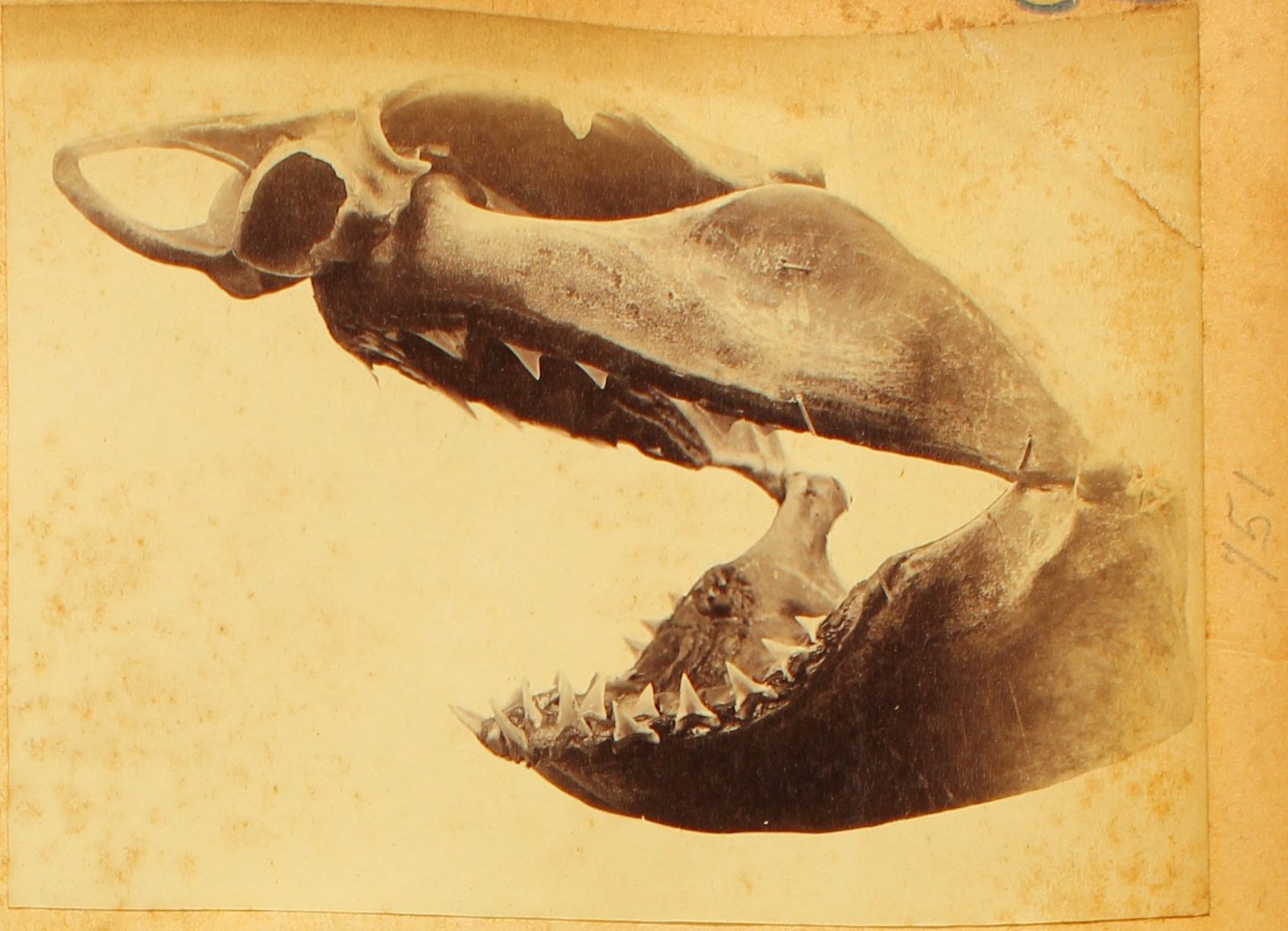Broadnose Shark, Notorynchus cepedianus (Péron, 1807)
Also called Seven-gilled Shark, Tasmanian Tiger Shark, Broad-snout, Ground Shark, Cowshark and Broadnose Sevengill Shark.
Introduction
The Broadnose Shark lives in temperate waters, usually on the bottom unless in shallow waters and feeds on fish, seals and cetaceans. It is viviparous, having litters of up to 80 young.
Identification
The Broadnose Shark has seven long gill slits in front of the pectoral fins, a single small dorsal fin well back on the body, and a wide, blunt snout. The teeth are cockscomb shaped, those on the lower jaw are wider than those in the upper jaw.
The species is silver-grey to brownish above and white below. It has black and white spots on the upper body and fins.
Habitat
It has been found in shallow surface waters of bays an estuaries down to at least 200 m on the continental shelf.
Distribution
The Broadnose Shark occurs in most temperate seas. In Australia it is known from the central coast of New South Wales, around the south of the country, including Tasmania, and west to south-western Western Australia.
The map below shows the Australian distribution of the species based on public sightings and specimens in Australian Museums. Click on the map for detailed information. Source: Atlas of Living Australia.
Feeding and diet
It feeds on other sharks, rays, bony fishes, seals, cetaceans and carrion.
Danger to humans
It is considered potentially dangerous to people, but the only confirmed attacks have been on divers in aquaria.

Broadnose Shark, Notorynchus cepedianus. From photographic album of prints from negatives c1880s.
Image: Henry Barnes Snr© Australian Museum
References
- Compagno, L.J.V. 1984. FAO species catalogue. Vol. 4, Sharks of the World. An annotated and illustrated catalogue of shark species known to date. Part 1 - Hexanchiformes to Lamniformes: viii, 1-250.
- Glover, C.J.M. in Gomon, M.F., C.J.M. Glover & R.H. Kuiter (Eds). 1994. The Fishes of Australia's South Coast. State Print, Adelaide. Pp. 992.
- Last, P.R. & J.D. Stevens. 1994. Sharks and Rays of Australia. CSIRO. Pp. 513, Pl. 1-84.





